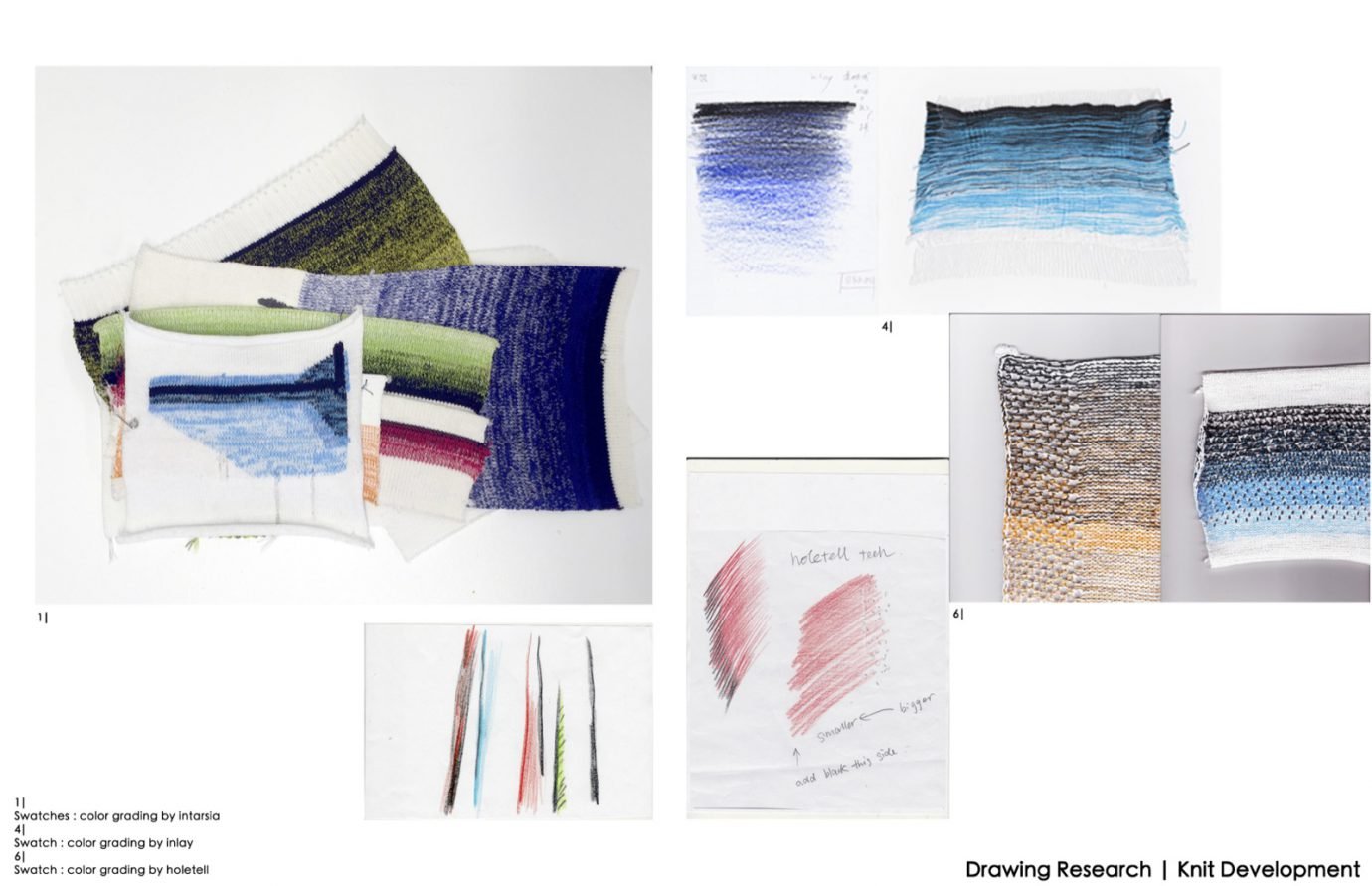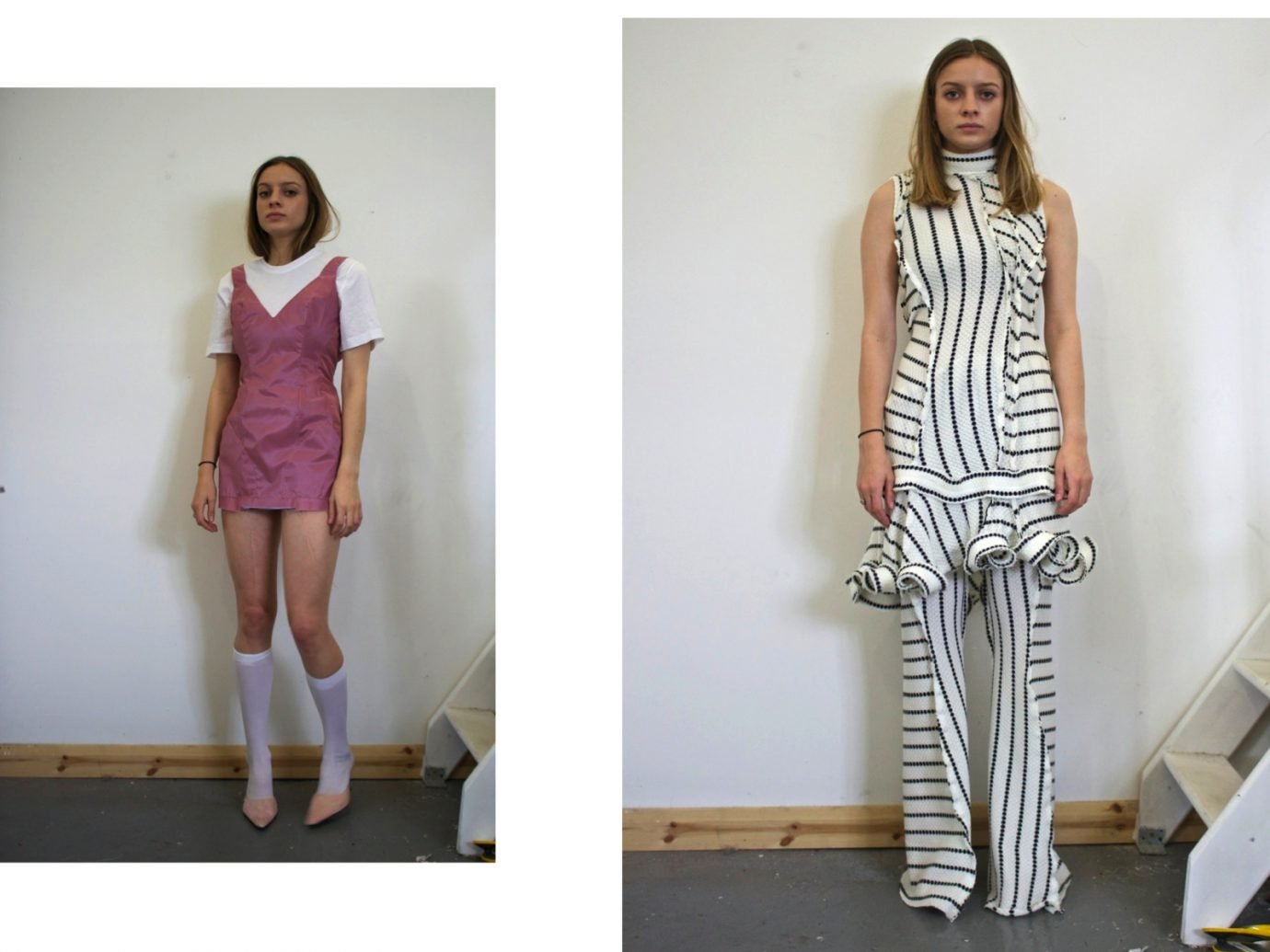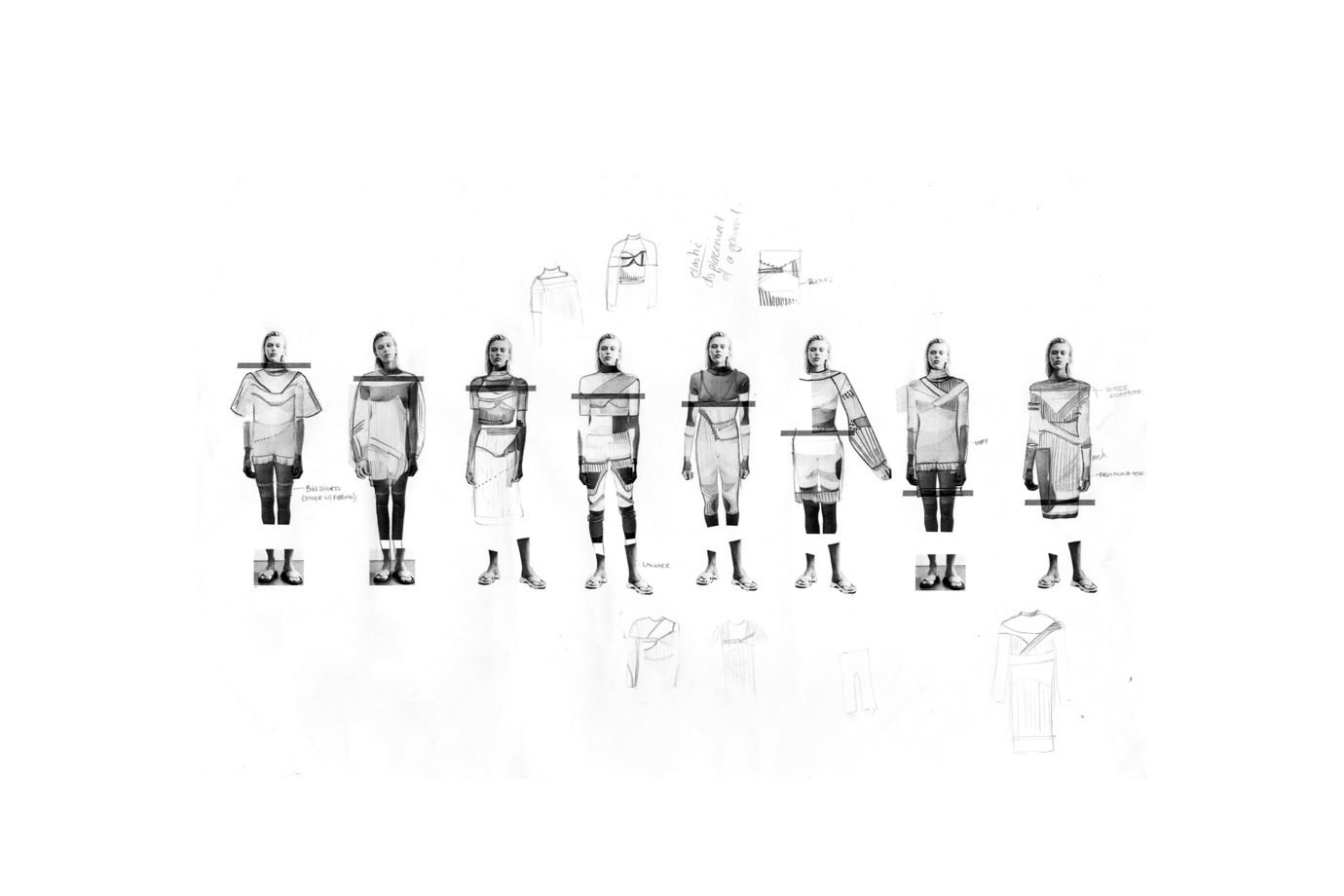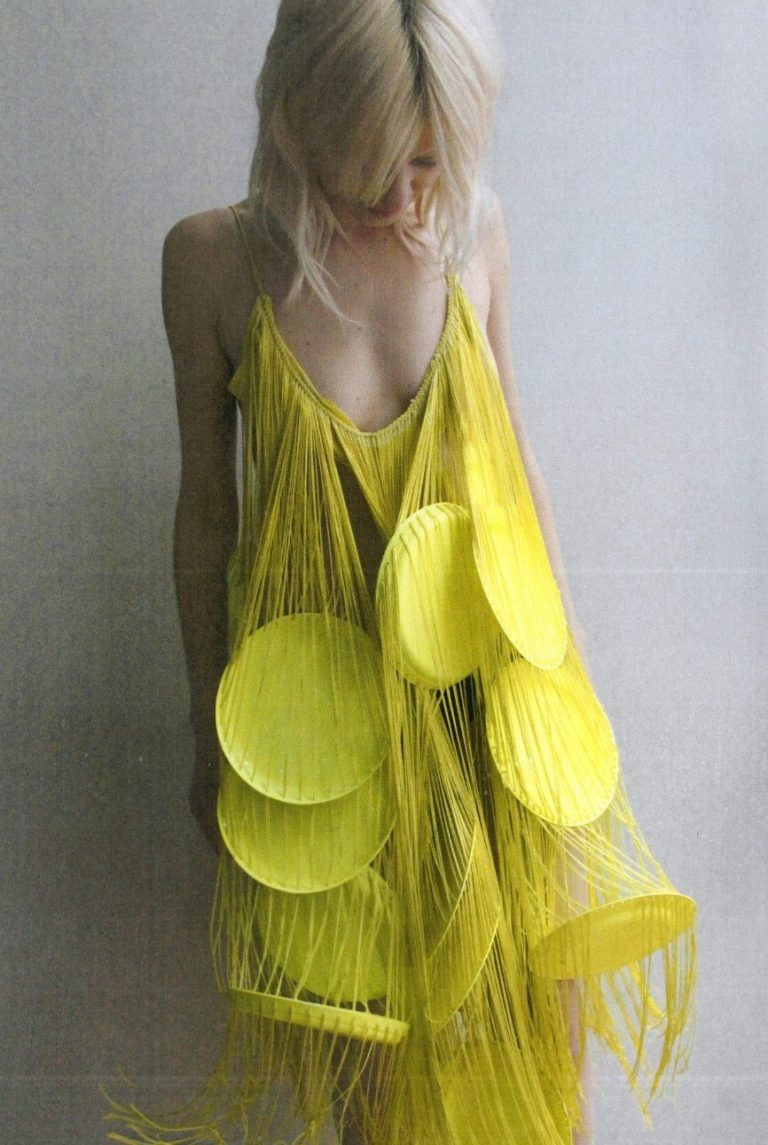“The central theme is leaving a remnant of yourself in the work, privileging handicraft and personal expression,” Meg Calloway said of her collection. Her words summarise the modus operandi of the Parsons MFA Fashion Design & Society program at large, whose students learn to build collections one yarn, crystal, or brushstroke at a time.
The lost “remnant” of self to which Meg refers is evident in the program’s eighth generation of graduates. A diversity of losses drive these twelve collections—loss of life, of innocence, of memory, of meaning, of environment—but no-one’s in mourning. Instead, they celebrate the new potentials that emerge.
Death can strengthen family and surface forgotten stories, as Aideen Gaynor (Bugs Garson) learned. But forgetting has its own beauty too, poeticised in Evian Li’s knitwear. Hualei Yu and Natalie Vladimiroff illustrate how miscommunication creates moments of humor and intimacy. Even the climate crisis can inspire new futurisms grounded in respect, compassion, and contemplation, as found in Sho Konishi’s “wearable archive” collection.
Leaving school is itself a loss these graduates will now endure, but if their work is any indication, they will readily find the upsides.












































































































